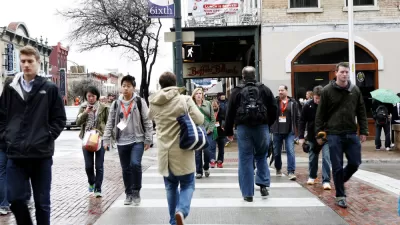Washington, D.C. recently released its first new guidelines for transportation review of new developments since 2012.

"In June, the D.C. Department of Transportation published new guidelines for reviewing the transportation impacts of major real estate developments," according to an article by D. Taylor Reich.
"These new guidelines may be the country’s most advanced in their attention to pedestrian infrastructure, but even they could be improved if they treated pedestrians with the same attentive, technical rigor that they use to treat traffic."
According to Reich, the effects of new developments on mobility, walkability, equity, and economic development have been neglected for much of D.C.’s history they were not considered during the development approval process. The new guidelines, however, elevate pedestrian safety and walkability during the evaluation of transportation in connection to new developments.
Reich lists more specific as follows, taken directly from the article:
- Surveys of current and planned pedestrian infrastructure, like the one described for the project at 301-331 N St. NE, are now required for all CTRs – and are required to go into even greater detail.
- An inventory of street trees, which contribute in many ways to the pedestrian realm, is now required within a three-block radius of the project.
- An analysis of vehicle crashes has been replaced with an analysis of pedestrian safety.
- A count of pedestrians and a count of bicycles are now required at every intersection where a count of cars is required.
The detailed, lengthy article also includes recommendations for even better outcomes in terms of walkability.
FULL STORY: Transportation is more than traffic: Measuring the impact of development on walkability

Planetizen Federal Action Tracker
A weekly monitor of how Trump’s orders and actions are impacting planners and planning in America.

Maui's Vacation Rental Debate Turns Ugly
Verbal attacks, misinformation campaigns and fistfights plague a high-stakes debate to convert thousands of vacation rentals into long-term housing.

San Francisco Suspends Traffic Calming Amidst Record Deaths
Citing “a challenging fiscal landscape,” the city will cease the program on the heels of 42 traffic deaths, including 24 pedestrians.

Amtrak Rolls Out New Orleans to Alabama “Mardi Gras” Train
The new service will operate morning and evening departures between Mobile and New Orleans.

The Subversive Car-Free Guide to Trump's Great American Road Trip
Car-free ways to access Chicagoland’s best tourist attractions.

San Antonio and Austin are Fusing Into one Massive Megaregion
The region spanning the two central Texas cities is growing fast, posing challenges for local infrastructure and water supplies.
Urban Design for Planners 1: Software Tools
This six-course series explores essential urban design concepts using open source software and equips planners with the tools they need to participate fully in the urban design process.
Planning for Universal Design
Learn the tools for implementing Universal Design in planning regulations.
Heyer Gruel & Associates PA
JM Goldson LLC
Custer County Colorado
City of Camden Redevelopment Agency
City of Astoria
Transportation Research & Education Center (TREC) at Portland State University
Jefferson Parish Government
Camden Redevelopment Agency
City of Claremont




























